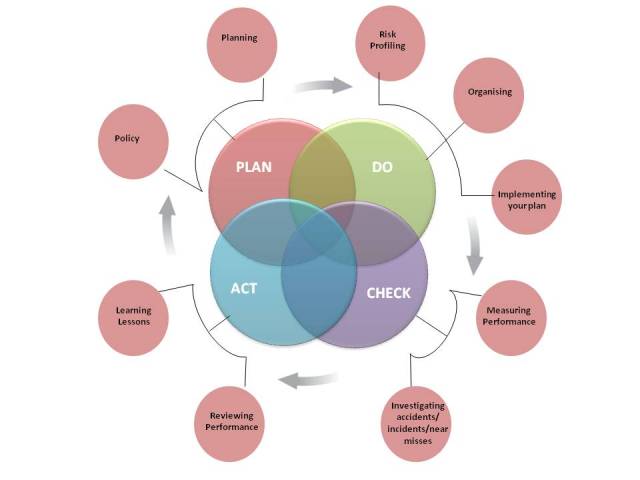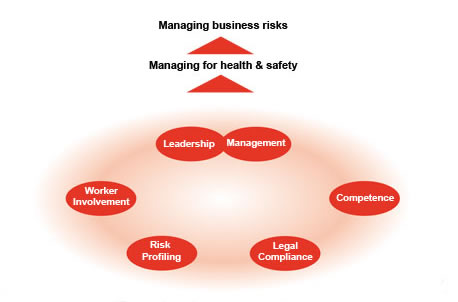Monitoring Health and Safety Performance
Introduction
The University’s health and safety systems is based on the Health and Safety Executive’s ‘Managing for Health and Safety’ (HSG65) document. The purpose of this system is to ensure continuous improvement in health and safety standards within the University. The aim is to support and enhance the core activities within the University (teaching and research) as well as other activities to ensure that these are undertaken in a manner which is as safe as is reasonably practicable.
Managing for Health and Safety (HSG65)
The basis of the HSG management system is:
- To Plan
- To Do
- To Check
- To Act

Figure 1
This system is a feedback management system, thus once you have put in place processes you then measure the effectiveness of your systems which is then used to improve the original systems. The aim is always continuous improvement of health and safety standards.
A critical feature of the management system is health and safety leadership. This includes not only senior managers, but Heads of Schools/Units, Principal Investigators, Supervisors and Employees. All need to show leadership and commitment to improvement of health and safety standards:

Figure 2
The new University Health and Safety Policy is designed to ensure that health and safety leadership is being undertaken and driving continual improvement in health and safety
The University proposes a management system which is as follows
- A University Health and Safety Policy which describes the health and safety objectives of the University and the arrangements for implementing these objectives.
- A series of ‘Sub-Policies’ which support the main University Policy which are:
- Incident reporting and investigation;
- Fieldwork and Travel;
- Fire Safety;
- Risk Assessment;
- Health and Safety Training;
- Local Rules for work with ionising and non-ionising radiations;
- Occupational Health;
- Contractors;
- A large number of detailed guidances on how to comply with the main University Health and Safety Policy as well as the Sub-Policies.
- Each School / Unit will then have very detailed local arrangements and processes for compliance with University policies. These will be very specific for the School/Unit (thus the arrangements for School of Chemistry will be different than for the School of History)
- All significant work will then need to be assessed for risk and appropriate control measures including the use of Standard Operating Procedures as well as other controls will be put in place to make sure the risk to staff/students/visitors is eliminated or if this is not possible then minimised. All such risk assessments will need to be recorded.
- All staff should receive a level of health and safety training to ensure that they can undertake all the tasks being asked of them as safely as reasonably practicable.
Performance then has to be measured
- Accidents, Incidents and Near Misses - These show when systems have failed and investigations should show how to improve the systems. This is the first level of feedback in the system
- Inspections - Once the above systems are in place then it will be expected that Schools/Units will undertake inspections to make sure that the workplace is as safe as is reasonably practicable.
- Key Performance Indicators - To ensure that there is a continual improvement of health and safety standards which is a critical feature of the feedback system from HSG65, it will be a requirement that specific measurable targets are set. Completion (or not) of these targets will be a quantitative measure of the improvement of health and safety standards
- Audits - The University (as internal auditors) or external auditors will then review compliance with the University policies and guidances as well as looking at inspections and KPI and the implementation of remedial actions.
(Updated 07/03/2021)
